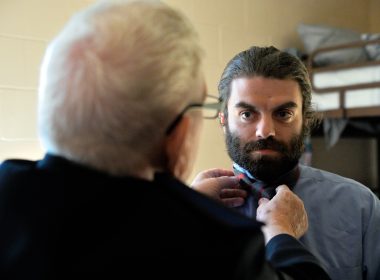by Glen Doss, Major
Winners loom large against the landscape of my memory: brave souls who dared venture into the realms of their own psyches and, with the help of the Lord Jesus Christ, rooted out flawed habitual thinking patterns that governed their lives, leaving havoc in their wake. These great souls were reborn.
On the other hand, there are the losers—those who chose not to cling to Jesus. Without divine resources at their disposal, they were too timid to intrude into their own psyches and consequently remained victims of faulty thinking patterns, which often doomed them to an early grave.
This alone is the difference between the winners and the losers: unless we root out the source of the problem, which lies within ourselves, we lose. All of us are doomed to live out a lie, deluded by aberrant thinking patterns, unless, through Christ, we discover the truth (John 18:37).
After managing adult rehabilitation centers (ARCs) for over a decade, in June 2007, I took on the role of chaplain at the Riverside County ARC in Perris, Calif. There I came to know personally the population that for years had been for me primarily nameless faces against a blurred landscape. After listening to one hard luck story after another, I discovered something amazing—all of these men are just like me; at bottom we are no different. We are each configured by a combination of unique genetics and childhood circumstances to be the individuals that we are. Additionally, since we all are created in the image of God, we are given a choice: either do nothing and be conformed to the world, or proactively reach out to Jesus for the opportunity to be transformed into his image.
I also discovered something else: each of us is inherently so stubborn that only a crisis will motivate us to surrender to our Creator. We all know, in our gut, that if God is in charge, then we will not be, and will not get to have things the way we please; therefore, we resist surrender.
Effectiveness of the 12 steps
I will own up to something here: for most of my years as an ARC administrator, I opposed the 12-step program of recovery. If a man accepts Christ as his Savior, I reasoned, then he is already saved, so why go on a journey of recovery? What is there left to recover from, since the sinner is already a new creation in Christ? The 12-step program seemed somehow secular or unchristian.
Over the years, though, as I saw man after man file up to the altar (in the ARCs they come to our penitent forms in droves), yet within days fall right back into a sinful lifestyle, I was puzzled. Meanwhile, I noticed that those who plunged wholeheartedly into the 12-step program often remained sober. “What is the missing piece?” I wondered.
I found the answer in a careful study of the 12-step program. I discovered it was born out of a studious analysis of Scripture. In its origin it is nothing neither more nor less than a practical Christian plan of action on how to implement God’s scriptural dictate to let go and let God have his way in our lives. Every step is backed up by numerous Bible passages. If you seek to be set free from the cloak of self-deception, this is the sure-fire prescription.
Here are the 12 steps of recovery (my paraphrase):
Step 1: We admit we are powerless over our flawed thinking patterns—the habitual ways in which we form conclusions, make assessments or pass judgments.
Step 2: We come to believe that the Lord Jesus Christ can free us from this enslavement—the prison of our own minds.
Step 3: We make a decision to turn our will and lives over to God’s care.
(Steps 1- 3, if done sincerely, lead to an authentic spiritual connection: we no longer rely on ourselves but instead cling to Jesus Christ to take us on a journey of self-discovery, resulting in increasing surrender. The journey may begin at the penitent form, but by no means ends there; it is progressive, accomplished one day at a time as we follow the succeeding steps.)
Step 4: Leaning on the Holy Spirit for direction and power, now we examine, in the clear light of day, our resentments and anxieties, getting to the bottom of them. Here we uncover our deeply entrenched flawed ways of thinking.
Step 5: We openly admit our errors. From deep in our gut, we cry out: “Dear God, I’ve been wrong all along!” This is groundbreaking.
Step 6: We prepare for God to remove the faulty thinking patterns.
Step 7: We humbly ask God to proceed with the psychic surgery. Hat in hand, we kneel before our Creator and plead, “Dear God, please help me.”
Steps 8 and 9: God answers our step 7 prayer as we make amends to the people we have harmed. If we are offering our gift at the altar, Scripture tells us, and remember that our brother has something against us, we must first reconcile with our brother (Matthew 5:23-24).
As we work these steps, we awaken one day to an awareness of the peace of God in our hearts—we experience spiritual healing. In steps 10-12, we follow directions on how to remain spiritually fit, leading up to a spiritual awakening. There we discover God has far more of us than we ever dreamed possible. We are now ready for him to use us to reach out to help other hurting people. We have effectively taken the log out of own eye and are finally ready to remove the speck from our brother’s eye (Matthew 7:3-5).
(For those seeking further information, I refer interested readers to Serenity: A Companion for Twelve Step Recovery, published by Thomas Nelson.)











